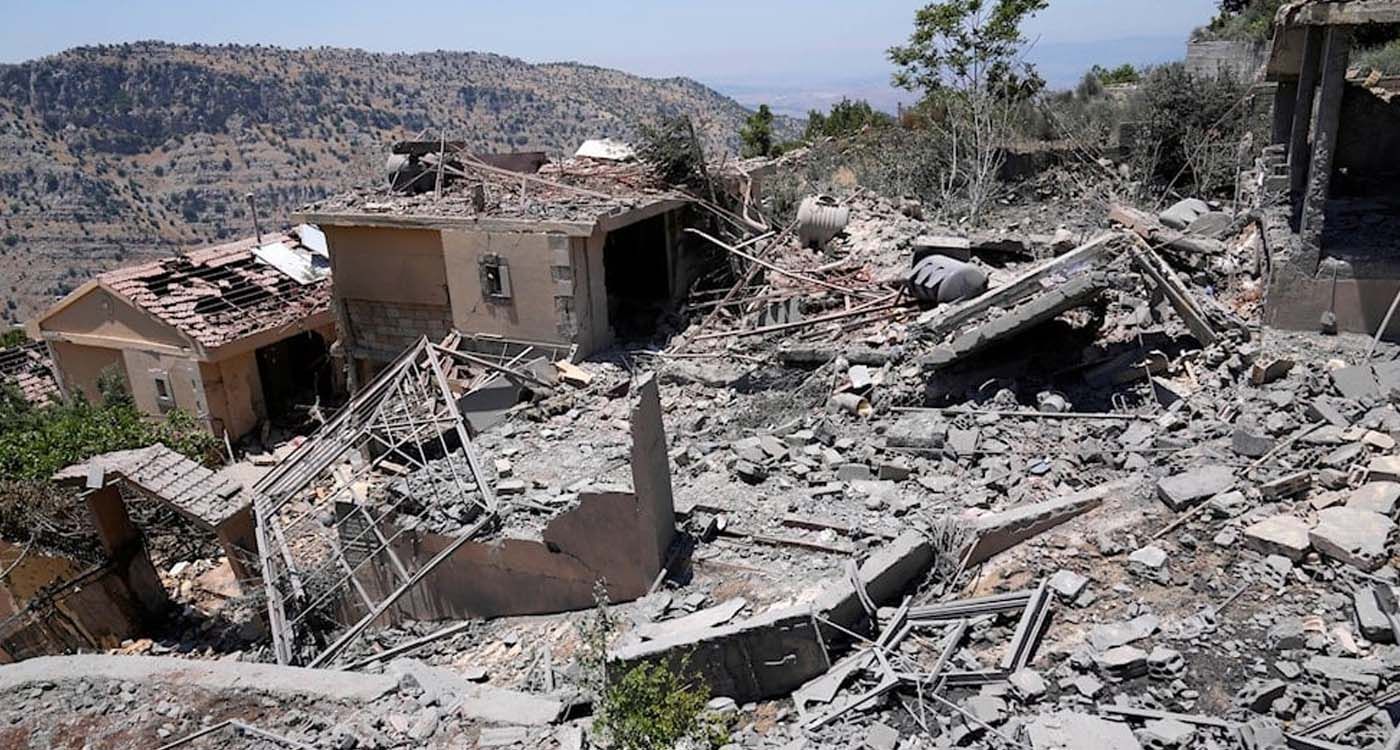
The war has increased pressures on Lebanese citizens, adding heavy burdens to an already struggling economy. This has led to rising prices, declining purchasing power, and increased unemployment and poverty rates, all amid a lack of effective solutions and growing daily hardships.
Lebanon is undergoing an unprecedented economic collapse, worsened by the recent war, which deepened the financial crisis that began in 2019 when the state declared bankruptcy, and banks, along with the Central Bank (BDL), faltered.
The financial sector’s collapse triggered a widespread crisis, affecting every facet of economic and daily life. The recent war made things worse. The multilayered challenges are compounded by severe humanitarian hardships impacting the majority of Lebanese.
In an interview with This is Beirut, economic expert Jassem Ajjaka noted that the economic losses Lebanon has sustained in the war between Israel and Hezbollah since October 8, 2023, can be classified by economic sectors or divided into two categories: direct and indirect losses.
Types of Losses
1- Direct losses: These refer to tangible damages, such as the destruction of infrastructure (homes, water pumping stations, communication networks, roads, and bridges), which are estimated to range from $4 to $5 billion.
2- Indirect losses: These include lost economic opportunities that were expected, estimated between $5 and $6 billion, bringing the total losses to between $11 and $12 billion to date.
Regarding losses by sector, Ajjaka elaborates as follows:
1- Tourism Sector: The sector is experiencing direct and indirect losses estimated between $3 and $4 billion, which constitutes 25% of the Gross Domestic Product (GDP).
2- Agricultural Sector: It lost approximately 40% of its capacity due to targeted attacks on crops and the use of phosphorus bombs.
3- Industrial Sector: Industrial activities have decreased by around 30%, accounting for 17% of the GDP.
4- Infrastructure: Losses in this area are estimated to be between $1 and $1.5 billion.
Regarding indirect strategic losses, Ajjaka highlights that “strategic losses include sidelining Beirut Port as a key transit hub in the Middle East in favor of the Port of Haifa, which could cost Lebanon tens of billions of dollars over the coming decades.”
In response to questions about the status of Hezbollah’s financial association, al-Qard al-Hassan, notably its potential losses — whether depositors or collateral holders will be compensated, and if there are reports of missing jewelry or delays in declaring the association bankrupt — Ajjaka provided several key insights on the association and its legal status.
He noted that the al-Qard al-Hassan association operates over 30 branches throughout Lebanon and offers interest-free loans guaranteed by collaterals. While it is licensed by the Lebanese Ministry of the Interior, it is not subject to the oversight of Lebanon’s Central Bank (BDL).
The US Treasury Department has imposed sanctions on the association since 2007. In 2021, these sanctions were extended to include six of its employees, who were accused of using personal accounts to transfer over $500 million to the association, enabling it to access the international financial system.
Following the financial crisis, the association set up ATMs that reportedly were not purchased through official channels. Additionally, in December 2020, the association was targeted by a cyberattack from a group known as Spiderz, during which 400,000 accounts linked to the association were exposed, including accounts belonging to political and military figures, according to Globes.
On the extent of overall losses, Ajjaka indicates that, “accurate information about the association's losses remains uncertain. Some experts estimate its assets to be around $1.5 billion, with a significant portion touched by the Israeli aggression. However, these figures remain speculative, and there is no confirmed information about compensation for depositors or any delays in declaring bankruptcy.”
On another note, economist Nassib Ghobril believes that estimates of economic losses are somehow exaggerated. Some reports suggest losses as high as $20 billion, while others provide lower figures. Ghobril emphasized that assessments of direct and indirect losses at this stage are unreliable, as the war is still ongoing.
He added that it would be advisable to wait until the war concludes to conduct a comprehensive field survey to assess the losses objectively. He stated, “Once the war is over, we can carry out a scientific evaluation of the extent of the destruction and economic losses, similar to what happened after the 2006 war, when accurate figures were established following a thorough field survey.”
Although it is not possible to quantify the losses currently, there is room to discuss the lost opportunities incurred by the Lebanese economy, which had begun to recover in 2023, with expectations of economic growth.
In this regard, Ghobril gave an overview of the year 2023. He noted that 2023 showed positive indicators across multiple sectors, with significant growth in tourism alongside favorable developments in both the industrial and agricultural sectors. He pointed out that salaries in the private sector were adjusted to match inflation rates, which spurred increased consumer activity.
He further explained that the stability of the dollar exchange rate since July 2023 has contributed to an improved economic environment, with projections indicating a growth rate of 2% by July and August. However, the war between Israel and Hezbollah has led to a downward revision of these expectations, with the economy now expected to grow by only 1% by the end of the year.
For 2024, Ghobril pointed out that the projections are unclear due to the raging war. He indicated that if the situation persists or escalates, the expected contraction could reach between 6% and 7%, with lost opportunities of approximately 10 percentage points of growth. When considering both 2023 and 2024, the total lost opportunities could amount to 11 percentage points.
Regarding the al-Qard al-Hassan Association, Ghobril underscored the ambiguity surrounding official statements about the organization. While the association claims to operate as a financial institution, it is not regulated by the Central Bank of Lebanon and does not publish financial reports. The only information regarding the return of depositors' funds comes from Hezbollah officials, leaving the association's financial data largely inaccessible. This lack of transparency raises numerous unanswered questions, requiring caution about releasing arbitrary figures.
In short, the Lebanese economy is grappling with severe challenges due to the war with Israel. Despite these difficulties, authorities and economic institutions must prioritize rebuilding trust and fostering a stable environment to support the economy. A thorough and objective assessment of the losses is essential for formulating effective strategies aimed at revitalizing the Lebanese economy and navigating through this crisis.



Comments